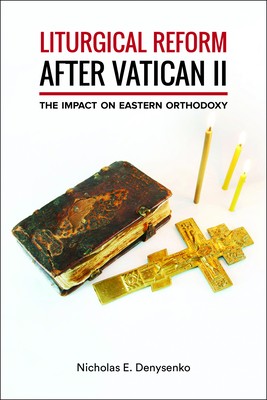
- We will send in 10–14 business days.
- Author: Nicholas E Denysenko
- Publisher: Fortress Press
- ISBN-10: 1451486154
- ISBN-13: 9781451486155
- Format: 12.2 x 25.4 x 3 cm, minkšti viršeliai
- Language: English
- SAVE -10% with code: EXTRA
Reviews
Description
Sacrosanctum Concilium was the first document promulgated by the Second Vatican Council. The impact of this document was broad and ecumenicalthe liturgical reforms approved by the Council reverberated throughout Christendom, impacting the order and experience of worship in Reformed and Orthodox Churches. Unrecognized in most studies, the Orthodox Churches were also active participants in the liturgical movement that gained momentum through the Catholic and Protestant Churches in the twentieth century.
This study examines Orthodox liturgical reform after Vatican II through the lens of Catholic-Orthodox ecumenical dialogue. After establishing the retrieval of the priesthood of the laity and active liturgical participation as the rationales for liturgical reform, the study presents the history of liturgical reform through four models: the liturgical reforms of Alexander Schmemann; the alternative liturgical center in the Russian Orthodox Church Outside of Russia; the symposia on liturgical rebirth authorized by the Church of Greece; and the renewed liturgy of New Skete Monastery.
Following a discussion of the main features of liturgical reform, catechesis, ars celebrandi, and the role of the clergy, Denysenko concludes with suggestions for implementing liturgical reform in the challenges of postmodernity and in fidelity to the contributions of Catholic-Orthodox ecumenical dialogue.
EXTRA 10 % discount with code: EXTRA
The promotion ends in 21d.15:56:47
The discount code is valid when purchasing from 10 €. Discounts do not stack.
- Author: Nicholas E Denysenko
- Publisher: Fortress Press
- ISBN-10: 1451486154
- ISBN-13: 9781451486155
- Format: 12.2 x 25.4 x 3 cm, minkšti viršeliai
- Language: English English
Sacrosanctum Concilium was the first document promulgated by the Second Vatican Council. The impact of this document was broad and ecumenicalthe liturgical reforms approved by the Council reverberated throughout Christendom, impacting the order and experience of worship in Reformed and Orthodox Churches. Unrecognized in most studies, the Orthodox Churches were also active participants in the liturgical movement that gained momentum through the Catholic and Protestant Churches in the twentieth century.
This study examines Orthodox liturgical reform after Vatican II through the lens of Catholic-Orthodox ecumenical dialogue. After establishing the retrieval of the priesthood of the laity and active liturgical participation as the rationales for liturgical reform, the study presents the history of liturgical reform through four models: the liturgical reforms of Alexander Schmemann; the alternative liturgical center in the Russian Orthodox Church Outside of Russia; the symposia on liturgical rebirth authorized by the Church of Greece; and the renewed liturgy of New Skete Monastery.
Following a discussion of the main features of liturgical reform, catechesis, ars celebrandi, and the role of the clergy, Denysenko concludes with suggestions for implementing liturgical reform in the challenges of postmodernity and in fidelity to the contributions of Catholic-Orthodox ecumenical dialogue.


Reviews